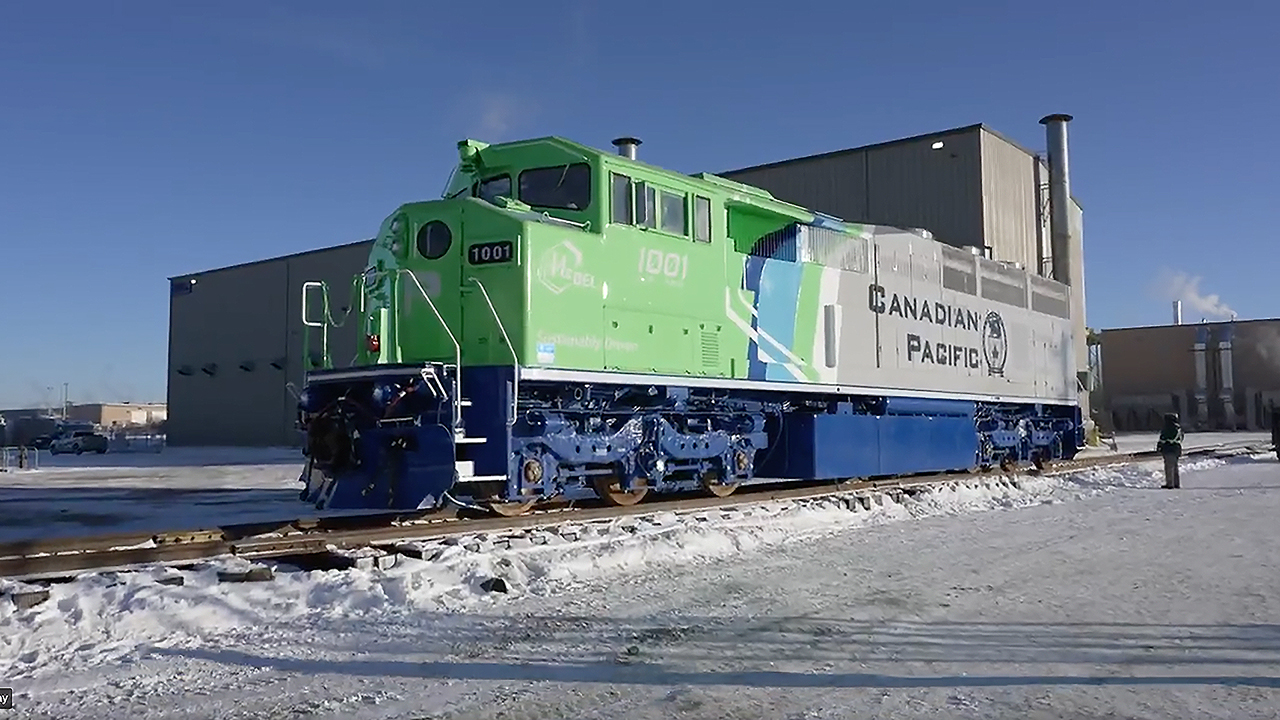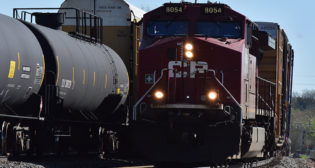
Hybrid Locomotives: Promising Main Line Power Gains
Written by Alex Luvishis, Ph.D
Hybrid technology combing hydrogen fuel cells (HFC) and batteries may be a viable means to obtain high power ratings for main line North American locomotives, which for a very long time have lagged their electric counterparts on other heavy-haul railways around the world.

Going way back in time, in 1966, traction motor power of North American diesel-electric locomotives was far less than that of Soviet Union electric locomotives. For example, individual traction motor power on the GE U30C was 366.6 kW, and the VL60 electric locomotive was 550 kW—50% greater.

Since the advent of AC traction motors, the difference in power has increased. For example, in 1995, AC traction motors on the GE AC6000 diesel-electric were rated at 750 kW, but were 1,600 kW on the Siemens Eurosprinter Type 152 (DB, Germany) and Type 465 (SBB Switzerland)—more than double.


For roughly 28 years, maximum power of AC traction motors has not changed, and new, powerful electric locomotives have appeared on the railways of Europe and Asia. In terms of maximum traction motor power, U.S. diesel-electrics are below that of electric locomotives, not only in Western Europe, but also in Russia (1,050 kW), India (WAG 12 1,112.5 kW) and China (HXD2, 1,650 kW). In fact, U.S. six-axle diesel locomotive total maximum power of 3,280 kW is less than that of four-axle European (6,400 kW), six- and eight-axle Russian (8,400 kW), and eight-axle Indian (9,000 kW) and Chinese (10,000 kW) electric locomotives.

Alstom/CNR Datong Electric Locomotive/Yongji Xinshisu Electric HXD2. 慕尼黑啤酒/Wikimedia Commons
The power advantage of AC traction motors over DC motors is limited by the maximum power of the diesel engines used, which have mostly remained unchanged since the mid-1990s.
Hybrid main line locomotives on North American railways could substantially increase total power available. Currently, such locomotives have been placed in revenue service, but only for switching service. As far as six-axle main line hybrid locomotives offering at least 4,500 kW (6,000 hp), Canadian Pacific Kansas City’s Ballard-powered experimental units come close, as they are retrofits of an existing 4,400-hp GE (now Wabtec) locomotive. This program holds promise for development of more-powerful units. I now believe they will appear in the foreseeable future—perhaps up to 7,200 kW (9,655 hp).
To achieve 7,200 kW output from a hydrogen fuel cell (HFC) hybrid locomotive, you can combine the 2,400kW fuel cell output and 4,800 kW battery output. For example, with a 200 kW Ballard fuel cell, 12 modules will be required. When using Horizon (Singapore) 400 kW fuel cells, 6 modules will be required. By weight, both the fuel cells and the battery stack can be placed on board the locomotive, albeit with axle loads of 30 tons or more.
If we consider the phase voltage of an AC traction motor to be 750V, then the voltage at the input of the voltage inverter should be 1,630V. Due to the high voltage required at the inverter input (from the output of the inverter elements and the battery stack), current must be supplied to voltage inverters input through step-up DC/DC pulse converters. Such a configuration, for example, can use a circuit already tested on Japan’s RTRI (Railway Technical Research Institute) experimental electric train.
This type of hybrid’s locomotive’s parameters and design will be clarified during mathematical modeling of the locomotive drive, but preliminary analysis shows that a 7,200-kW locomotive with hydrogen fuel cells can be developed using available technology.

Alex Luvishis, Ph.D. for 18 years headed the laboratory that developed control systems for Russia’s first electric locomotives and asynchronous traction motors in the former USSR. For a further seven years, he headed the rolling stock department at the Institute of Technical Information of Railway Transport in Moscow. Dr. Luvishis is the author of more than 100 articles on electric traction drives and the book “Hybrid Rail Vehicles,” published in 2009. His interests are asynchronous traction drive systems for modern rolling stock, and hybrid drive systems for trams, suburban and regional trains and switching and main line locomotives. He has lived in the U.S. since 1999.



